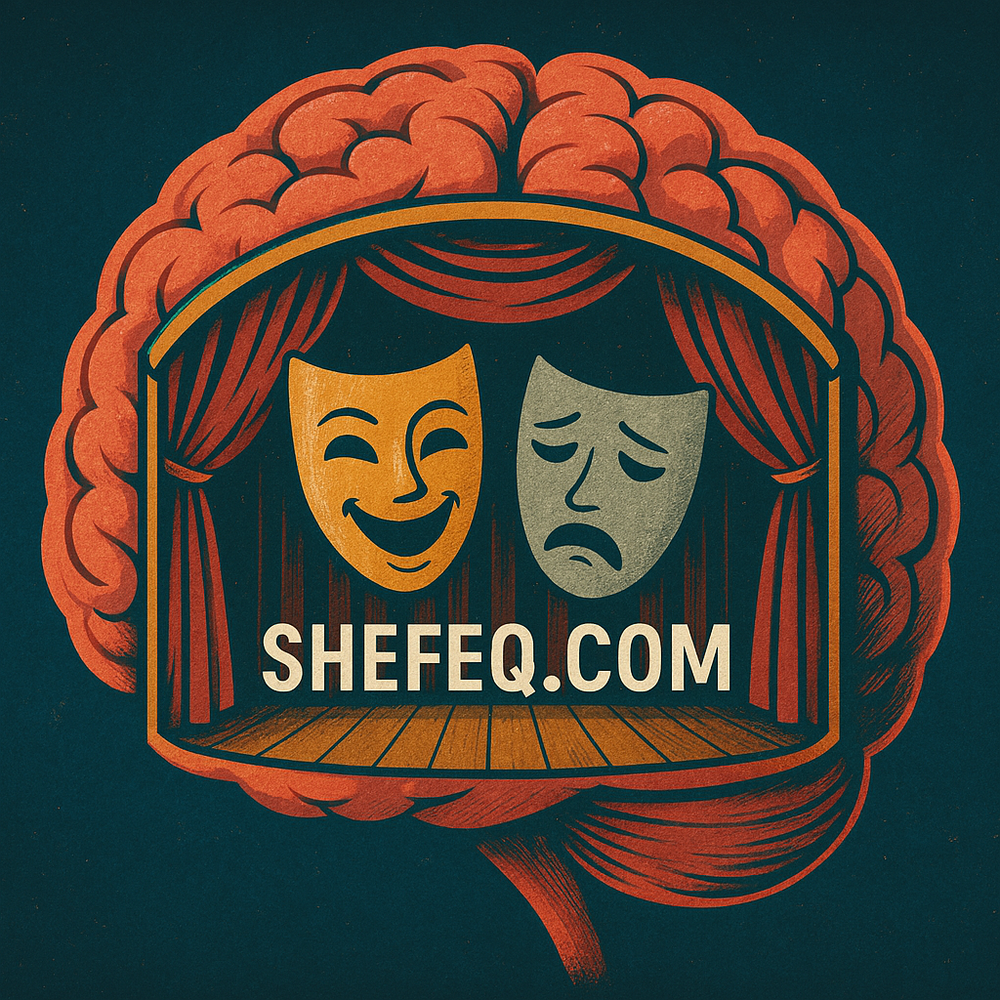INTRODUCTION: The Body Speaks, But Does the Soul Listen?
One day, you feel a stabbing pain in your chest. You fear it might be a heart attack. You go to the clinic — everything is fine. Another time, it’s shortness of breath, stomach pain, dizziness, even fever... But no medical cause is found. Could it be that the body isn’t sick? Maybe the brain is trying to protect you — by scaring you?
This article explores the reality of psychosomatic symptoms — that is, how emotional tension can manifest as physical symptoms — through scientific, social, and emotional perspectives. Sometimes the body doesn’t hurt — we feel pain in our mind.
CHAPTER I: What Is Psychosomatics?
“Psyche” means soul, “soma” means body. Psychosomatics is the process by which emotional tension transforms into physical symptoms.
Emotions that affect the body:
-
Fear — heart palpitations, trembling
-
Anger — stomach tightening, jaw clenching
-
Sadness — lump in the throat, breathlessness
-
Anxiety — diarrhea, nausea, sweating
Psychosomatic symptoms are not fake. They are real bodily reactions, just without a medical explanation — but with an emotional one.
CHAPTER II: How the Brain Deceives Us
The brain evaluates danger. And even when the threat isn't real, it can trigger real reactions. It’s as if the brain is saying:
“I made your body hurt so you'd stop and think about what’s going on.”
Deceptive symptoms:
-
Panic attack that feels like a heart attack
-
A simple bloating mistaken for cancer
-
Lack of concentration mistaken for multiple sclerosis
-
Shortness of breath interpreted as asthma (hyperventilation)
Famous psychiatrist’s quote:
“The body reveals what the mind refuses to say.” — Dr. Gabor Maté
CHAPTER III: Which Illnesses Can Be Psychosomatic?
-
Gastritis, ulcers — explosions of accumulated stress in the stomach
-
Migraine — emotional load affecting brain vessels
-
Bronchitis — suppressed anger manifesting as “inability to breathe”
-
Skin conditions (psoriasis, eczema) — inability to express oneself
-
Heart arrhythmias — inner panic intensified by fear
CHAPTER IV: Childhood Trauma – Where the Pain Begins
The brain encodes emotion and can present childhood trauma as physical symptoms in adulthood.
Examples:
-
Loss of a father — recurring chest pain
-
Parental pressure — headaches, constant feeling of being overwhelmed
-
Silenced as a child — throat tightness, speech difficulties
Even if the brain forgets fear, the body remembers.
CHAPTER V: It's Not the Body, It's the Soul That Hurts
Common phrases:
-
“I’ve done all the tests — everything is clean.”
-
“The doctor says it might be psychological, but I REALLY feel pain.”
-
“I don’t even understand why I’m so anxious.”
Yes. Because you truly do feel pain. The brain gives the command, and the body obeys. But the cause isn’t an organ malfunction — it’s emotional imbalance.
CHAPTER VI: Overlooked Signs of Psychosomatics
-
Night sweats — emotional insomnia
-
Feeling of choking during sleep — unexpressed fear
-
Frequent “colds” — hyperactive defense instinct
-
Restlessness in legs — suppressed urge to act
CHAPTER VII: Warning! “Healthy”-Looking but Emotionally Burdened People
Sometimes, those who appear “strong and healthy” are prone to psychosomatic reactions because:
-
They don’t express emotions
-
They play the role of the “strong one”
-
They never take time to think about their body
And then comes: chronic back pain, shortness of breath, heart rhythm issues…
CHAPTER VIII: How to Outsmart the Brain — Listen to the Demand
To overcome psychosomatic symptoms:
-
Note your body’s signals
-
For each symptom, ask: “What was I feeling?”
-
Engage in internal dialogue: “What is my body trying to tell me?”
Exercise:
Sit quietly, close your eyes. Ask the aching area: “Why are you hurting me?” A response will come. Sometimes: “You’ve carried too much,” sometimes: “Let go.”
CHAPTER IX: Ways to Heal Psychosomatic Issues
Natural approaches:
-
Psychotherapy (CBT, EMDR)
-
Art therapy (drawing, writing, music)
-
Deep breathing techniques
-
Body-centered therapies (yoga, qigong, somatic exercises)
-
Daily emotional journal
Golden question:
“If my body could talk, what would it say?”
CHAPTER X: The Invisible History of Silent Pain
-
The brain deceives — because it wants to protect
-
The body speaks — because it can no longer endure
-
The soul is silent — because it was silenced
To restore balance between these three, we must communicate with our emotions. Only then will the symptoms disappear.
CONCLUSION: The Pain Isn’t Fake — It Has Meaning
Psychosomatic symptoms are real pain. But the cause is different. Understanding that cause is the first step to befriending yourself. Remember:
“Sometimes pain is the most honest answer your body can give you.”
— Carl Jung
POSTSCRIPT: Don’t Try to Change Your Body — Just Listen to It
Sleep disorders, sweating, headaches, heart palpitations… You call it “illness”, but your body says “listen to me.” Listen. Understand. Relax.
Because: Your body is speaking — but are you hearing it?

